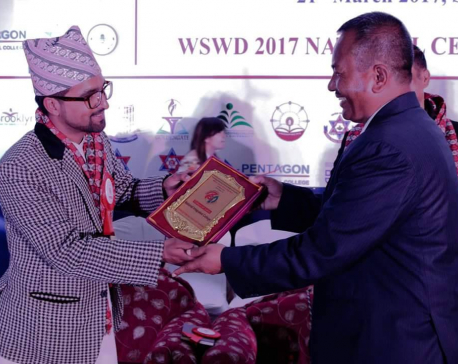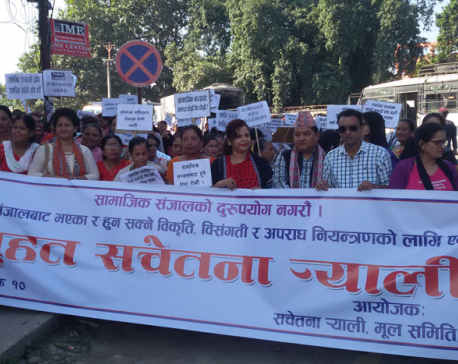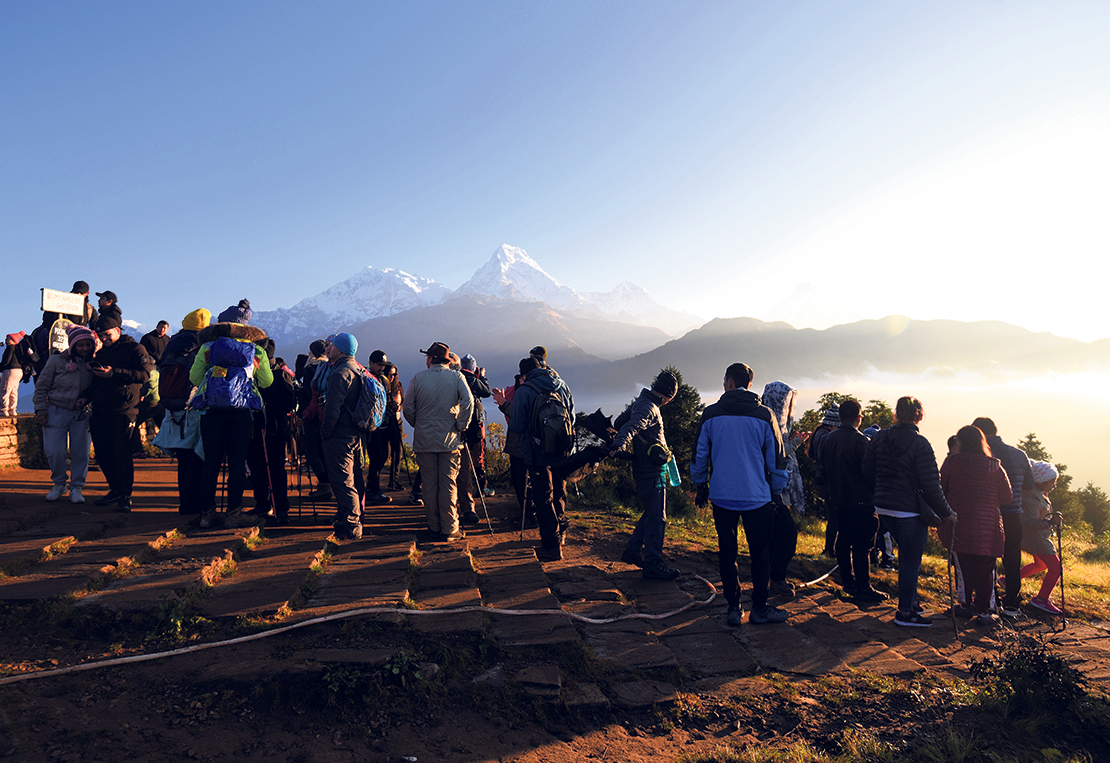
OR
Air pollution in capital
Turns out there are some relatively easy steps that can be taken immediately to reduce the level of air pollution in Kathmandu valley. These steps have been suggested in an action plan recently submitted to the National Planning Commission by an ‘air pollution control’ taskforce comprised of environmental experts and senior government officials. One suggestion is that road repairs be carried out within strict deadlines.
Sprinkling water in particularly dusty stretches is also feasible, says the report. The task of strengthening the vehicle emission testing system is yet another immediate step that could be taken. It is shocking that the only available instrument to test the level of vehicular pollution in Kathmandu has been kaput for the past four years, resulting in
disastrous increases in the levels of toxic air pollutants. It has not been repaired because air pollution and its grave health risks are seemingly not government priorities. Yet another sensible suggestion is complete waiver of taxes on import of electric vehicles while discouraging the import of those that run on dirty fossil fuel. Yes, it is not rocket
science to work out that in order to improve the quality of air in Kathmandu the use of small
(polluting) private vehicles should be discouraged, even as we continue to improve our public transport system.
Nor are these recommendations entirely new. For instance, in 2011, the government started the US $30.42-billion Kathmandu Sustainable Urban Transport Project (KSUTP) to run through June 2017. Among its main goals was to discourage the use of private vehicles through the provision of “more convenient, comfortable, reliable and safe public transport system”. In line with this objective, bigger and cleaner means of public transport, exemplified by the likes of Sajha Yatayat and Mahanagar Yatayat, have blossomed in recent times. But while there has been some success in this goal, the other goal of the project, to improve the valley’s traffic management as well as traffic safety, has been mostly ignored. With the exception of their success in cutting down on drunk-driving related injuries and fatalities, the traffic police of Kathmandu is badly inept. Many traffic police officials are rude. The hand signs they make are often incomprehensible. Nor do they seem to have much idea about efficient traffic management. It doesn’t help that our traffic lights are in a state of total disrepair.
Again, in the nearly three decades after the restoration of democracy in 1990, the question of urban mobility and clean and efficient transport system has never been a state priority. Implementation of plans like KSUTP has hence been half-hearted. Seldom does the government act on its own initiative. All the recent action on pollution-control is also the result of public pressure that has been gradually building as the cases of pollution-induced illnesses have steadily increased. If not, there can be no justification for the arbitrary distribution of the green ‘pollution-free’ stickers to vehicles without so much as a peek into their exhaust pipes. In fact, it may be argued that such blatant neglect that directly harms the wellbeing of the people is criminal. Those responsible for it must be punished. And why aren’t those sprinklers on the roads already?
You May Like This

Social workers for transformation of society: Minister Thapa
KATHMANDU, March 22: Minister for Health Gagan Thapa has praised the role of the social activists and social workers for... Read More...

Awareness rally against demerits of social networking sites
CHITWAN, Oct 26: The organizations involved in the women and children's sector today organised an extensive awareness rally against demerits... Read More...

International Conference on Social Entrepreneurship on the cards
KATHMANDU, June 20: The first International Conference on Social Entrepreneurship is going to be organized in Kathmandu. ... Read More...




Just In
- UML's National Convention Representatives Council meeting today
- Gandaki Province CM assigns ministerial portfolios to Hari Bahadur Chuman and Deepak Manange
- 352 climbers obtain permits to ascend Mount Everest this season
- 16 candidates shortlisted for CEO position at Nepal Tourism Board
- WB to take financial management lead for proposed Upper Arun Project
- Power supply to be affected in parts of Kathmandu Valley today as NEA expedites repair works
- Godepani welcomes over 31,000 foreign tourists in a year
- Private sector leads hydropower generation over government






_20220508065243.jpg)








Leave A Comment